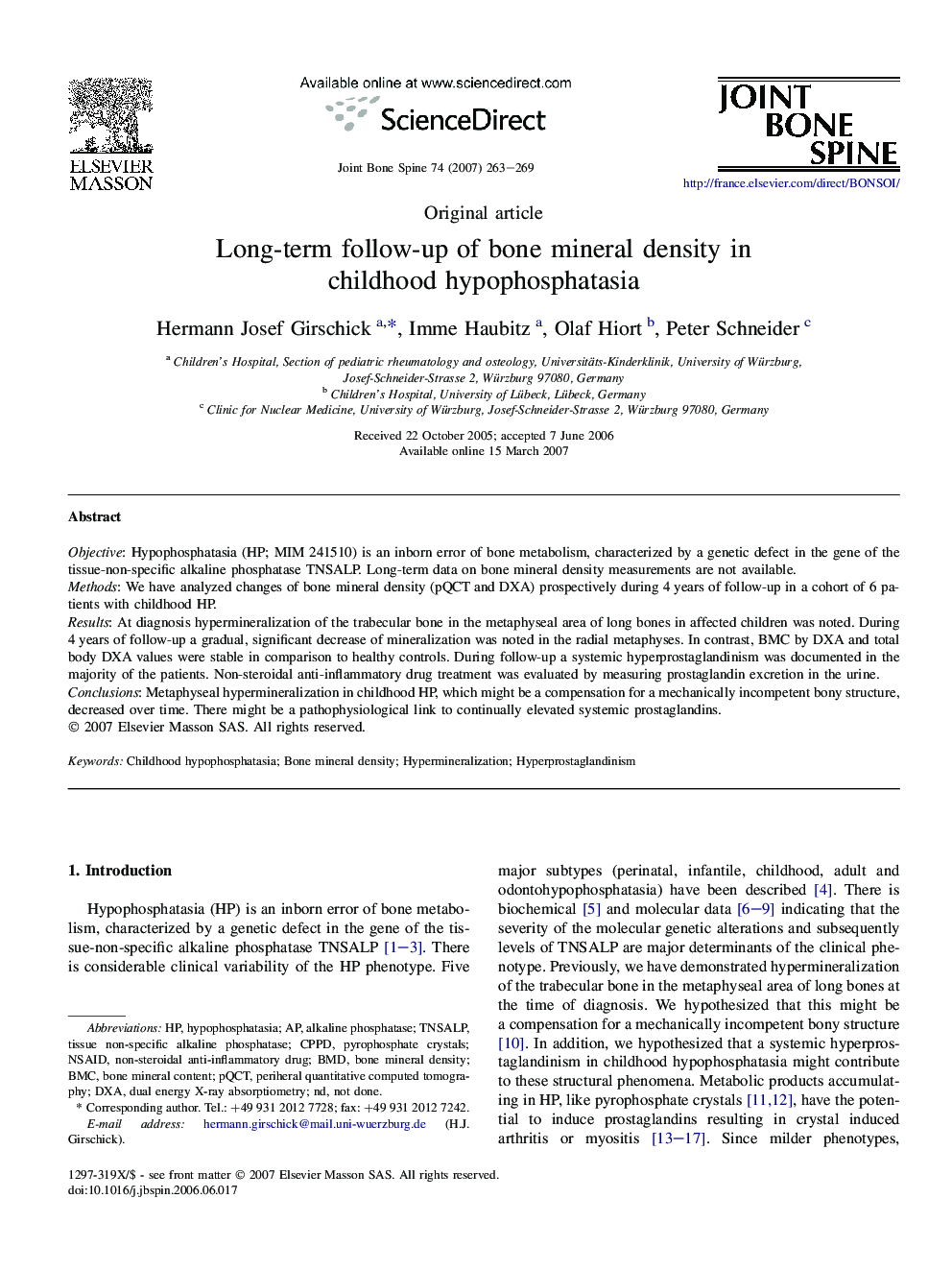| Article ID | Journal | Published Year | Pages | File Type |
|---|---|---|---|---|
| 3367525 | Joint Bone Spine | 2007 | 7 Pages |
ObjectiveHypophosphatasia (HP; MIM 241510) is an inborn error of bone metabolism, characterized by a genetic defect in the gene of the tissue-non-specific alkaline phosphatase TNSALP. Long-term data on bone mineral density measurements are not available.MethodsWe have analyzed changes of bone mineral density (pQCT and DXA) prospectively during 4 years of follow-up in a cohort of 6 patients with childhood HP.ResultsAt diagnosis hypermineralization of the trabecular bone in the metaphyseal area of long bones in affected children was noted. During 4 years of follow-up a gradual, significant decrease of mineralization was noted in the radial metaphyses. In contrast, BMC by DXA and total body DXA values were stable in comparison to healthy controls. During follow-up a systemic hyperprostaglandinism was documented in the majority of the patients. Non-steroidal anti-inflammatory drug treatment was evaluated by measuring prostaglandin excretion in the urine.ConclusionsMetaphyseal hypermineralization in childhood HP, which might be a compensation for a mechanically incompetent bony structure, decreased over time. There might be a pathophysiological link to continually elevated systemic prostaglandins.
